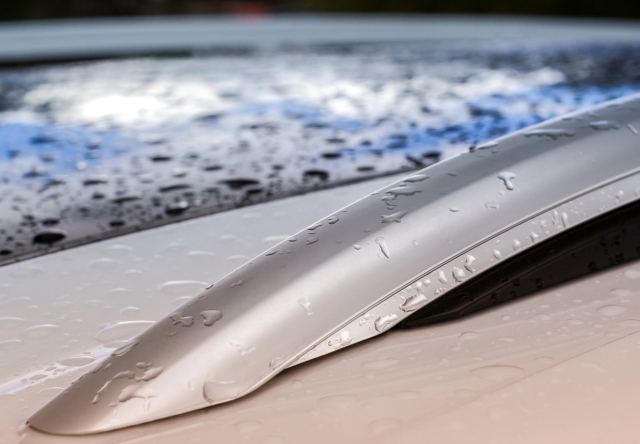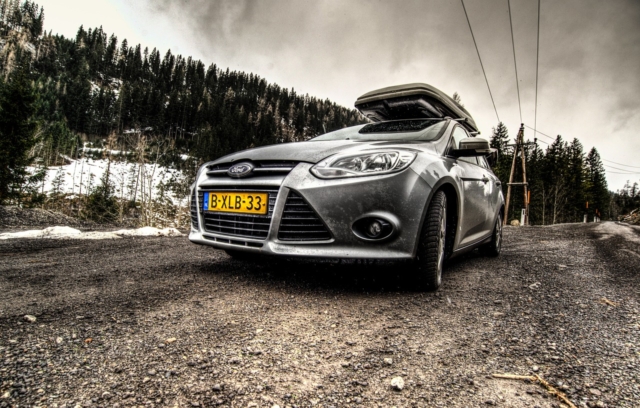Australian travellers love roof racks because they provide additional storage space on their vehicles without needing to tow a trailer. Roof racks make it easy to reduce your load weight and increase your car’s fuel efficiency on long road trips.
Unfortunately, some travellers overload their roof racks to the point where they are no longer safe for road travel. Every roof rack design has a specific load capacity you must follow. If the weight of your load exceeds the recommended maximum capacity, it could create a danger for you and other people on the road.
Think about the size of your vehicle. Too much load weight on your roof racks will overstress your car’s engine and gears. Then, your vehicle will become less fuel-efficient and more unstable and unbalanced on the road. That is why you must learn how to pack your roof racks correctly to avoid these problems on your trip.
Below are the top 7 tips for safely packing the roof racks on your car.

1) Check the Roof Rack Load Limits Per State and the Manufacturer’s Maximum Load Capacity Recommendations
Each Australian state sets a maximum length and width allowed for vehicle roof racks and loads.
For example, a fitted roof rack on a vehicle in Western Australia cannot have a width of more than 2.5 metres. It also cannot reach 150 millimetres past the right or left side of the vehicle. Also, the load’s length cannot extend 1.2 metres past the rear or front of the car.
Figuring out the proper dimensions for the roof racks and loads is usually manageable for most Australian travellers. However, confusion usually occurs when calculating the roof racks’ maximum load weight capacity.
Several factors influence the maximum load weight, such as the quality and durability of the roof rack and the manufacturer’s maximum load weight recommendation. In most cases, a roof rack for a smaller vehicle like a sedan would have a maximum load capacity of 50 kilograms. In contrast, roof racks for larger cars with four-wheel drive typically have a maximum load capacity of 100 kilograms.
Check the roof rack load limits of the states you wish to travel to and the manufacturer’s load recommendations for the roof racks. If you follow these recommendations and legal limits, you should not experience any safety issues on the road.
2) Find Out the Maximum Load Weight Recommended for the Roof of Your Vehicle
Discovering the maximum load capacity of your roof racks is not enough. You must also look in your vehicle owner’s manual to find out the maximum load weight recommended for the roof of your car.
Because of its size and power differences, every car has a different roof load capacity. For instance, a smaller vehicle like a sedan has a lower roof load capacity than a large four-wheel drive vehicle.
Consider the roof rack weight when calculating the total roof load capacity because the roof racks also add weight to the roof. In other words, the roof rack and load weight together must not exceed the maximum roof load capacity recommendation.
3) Pack and Centre the Roof Rack Load Properly
Resist the urge to quickly pack your load onto the roof rack without using a proper packing system. Incorrectly packing your roof rack could damage it or the items loaded. It could also decrease fuel efficiency by creating more wind resistance as you drive.
Here are some basic strategies for packing the load onto a roof rack properly:
- Lay the items flat and centred
- Centre the heaviest items the most (preferably behind a sturdy barrier)
- Don’t stand objects upright (if possible)
- Consider buying and installing wind deflectors for the front frame of the roof racks
- Don’t pack large boards or thin sheets of material without the proper reinforcements to brace them in place
- Position the items in an organised manner so that they can be easily tied and secured on the roof racks
Please Note: If you are hauling fuel cans or other hazardous materials, storing them in rear carriers rather than on the roof racks would be better.

4) Use the Proper Tie-Down Straps
Once you learn how to lay your items on the roof racks correctly, the next step is to tie them down properly. Tying and securing your items will require using the proper tie-down straps, especially when tying down heavy objects on the roof racks. We recommended a ratchet strap for heavy items because it maintains tension across the entire strap to keep them in place.
On the other hand, the cam buckle strap is better for loading and securing lighter items on your roof racks. It doesn’t provide as much tension as the ratchet strap but offers enough tension to secure lighter things. You could also tie a tensioning loop to other durable cords to secure light items. Just ensure the cord is tied well to the frame of the roof rack.
Finally, check the straps and cords to ensure everything is tight and tense. There should be no loose ends anywhere, or else they could flap around on the roof of your car and annoy you during the trip. Also, extended areas of the strap could create more wind resistance if exposed to the open air.
If you find any loose areas in the strap, fold them into smaller rolls and tape them to the roof rack using special insulation tape. That should prevent the flapping and wind resistance problems.
5) Install High-Quality Roof Racks
Are you using a high-quality roof rack? You may feel tempted to choose the cheapest roof rack to save money, but you should be careful. A low-quality, lightweight roof rack made of cheap alloy materials could crack or wear down fast, especially if you put too much load on it.
If you plan to go on frequent road trips in areas with rough terrain, it would be wise to invest in high-quality roof racks made to last. Heavy loads and rough off-road terrain areas can severely impact your roof racks and shorten their lifespan. So, make sure to use strong roof racks made for driving on rough roads if you plan to drive in rural areas, such as the ones in the Northern Territory.
The vehicle used is a factor too. Each car has a static and dynamic load rating for how much it can haul on various surface terrains. For example, a static load rating refers to the maximum roof load weight capacity for vehicles travelling on paved roads, such as highways. A dynamic load rating is the maximum roof load weight capacity for cars travelling on rougher road conditions, such as dirt roads and off-road terrain. This rating will usually be less than the static load rating.
Pack your roof racks with the appropriate load rating in mind. If you know you won’t go off-road, you can stick with the static load rating for a higher maximum roof load capacity.
6) Do Not Ignore Unusual Wind Sounds
You can expect to hear wind sounds when the outdoor wind hits the roof racks as you drive. While the sounds may not be a safety hazard, they can still be annoying and difficult to tolerate on long road trips. That is why more Australian motorists choose roof bars over roof racks since they are lighter and shaped like aircraft wings to reduce noise.
There are some “home remedies” to help reduce the wind noises even further. Some Australians diagonally tie bungee cords around their roof bars to reduce the noise. Others tape circular padding or foam to the bars to stop the passage of wind.
The idea is to cover all exposed areas of your roof racks or bars, such as the ends and holes, because they cause noises whenever the wind passes through them.
7) Have Patience – Do Not Rush
You may feel the urge to rush when packing your roof racks because of a strict travel schedule and a desire to get ahead of the heavy traffic before it starts. However, you will make packing mistakes if you rush it too much.
Please give yourself ample time to pack your roof racks to ensure it is done correctly. After you finish, check over your packing job to see if any vulnerable areas are present. All it takes is one small mistake or one loose strap for your items to get damaged and potentially endanger someone else on the road.
Conclusion
Towing companies like ours have seen many auto accident cases where motorists forgot to pack their roof racks correctly. If you want to avoid contacting our towing company for assistance, you should take it upon yourself to pack your roof racks safely and carefully.
After all, aside from increasing energy efficiency, properly packed roof racks create a safer and less consequential travel experience for you and the passengers in your vehicle.